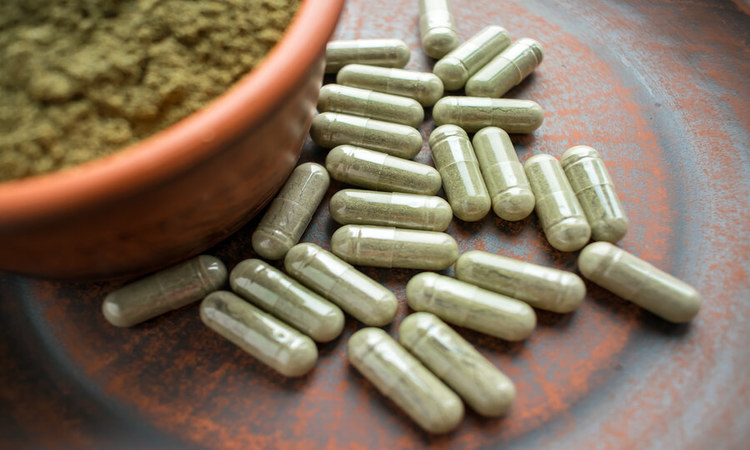
Kratom Addiction – Kratom (Mitragyna speciosa) is a tropical, tree-like, plant native to parts of Southeast Asia. In Thailand and other nearby areas, kratom has been used as an herbal remedy for several centuries. Depending on the dosage and potency, kratom can induce both stimulant and opioid-like effects, thereby relieving symptoms produced by a variety of ailments.
Anecdotal evidence suggests that kratom’s ability to increase energy, relieve mild pain, and bind to the brain’s opioid receptors is helpful in reducing opiate withdrawal symptoms. In the past two decades, the use of kratom, both as a recreational drug and for self-medication of opiate withdrawal symptoms, has significantly increased. Nevertheless, medical professionals often warn against the use of kratom for these purposes.
Is Kratom Use Dangerous?
In the Western world, research regarding the effects of kratom or its potential for abuse and addiction is very limited. As of the time of this writing, little experimentation has been undertaken to ascertain if kratom is safe for human use. Most current information we have about kratom is anecdotal, resulting from reports by those who use it, physicians who have witnessed its effects, or based on animal experiments. However, some clinical trials in the United States are anticipated or underway.
At the federal level, kratom is not yet scheduled as a controlled substance. Therefore, in most states, kratom is widely available for purchase via the internet and head shops. Kratom is available in capsule and compressed tablet form, or as chopped loose leaves from which tea can be brewed.
Studies have suggested that kratom contains more than 20 active chemicals, many of which attach to opioid receptors in the central nervous system (CNS). For this reason, the development of physical dependence on kratom is a possibility.
Furthermore, some chemicals present in kratom are known to disrupt the drug-metabolizing activity of enzymes in the liver, so it does have the potential to interact with other substances. As a result, overdoses have been reported, some of which resulted in death.
And despite its long history of seemingly benign medicinal use in Southeast Asia, kratom abuse is also well-known in the region. Because of its potential for addiction, Thailand, Myanmar, and Malaysia have all banned kratom outright.
Low-dose Effects of Kratom
At low dosages under 5 grams, the principal effects of kratom tend to be stimulant-like. On average, effects take about 10 minutes to onset and last approximately one or two hours. While the majority of reports by users contend that kratom’s effects are pleasant in general, a minority of users report having experienced feelings of anxiousness, uneasiness, and agitation.
The stimulant-like effects of kratom are comparable to those of amphetamine, albeit much weaker, and include the following:
- Suppressed appetite
- Increased energy
- Enhanced alertness
- Improved sociability
- Amplified libido
Moderate- to High-Dose Kratom Effects
The opiate-like effects onset at dosages between 5-15 grams and these effects can last for several hours. Like opioids, the “high” experienced at this dose is characterized by feelings of well-being and relaxation, although less intense. Also, a minority of users report having encountered discomfort, as well as dysphoria and depression.
Moderate to high dosages of kratom may induce the following opiate-like effects:
- Analgesic pain relief
- Drowsiness
- Dreamlike thoughts
- Cough suppression
- Relief from opioid withdrawals
- Profound sedation (at doses > 15 g)
- Loss of consciousness (at doses > 15 g)
Side Effects of Kratom
Kratom use is associated with a wide variety of side effects, which vary in intensity from barely perceptible to life-threatening, depending on the dosage and potency of the kratom consumed.
Side effects of kratom are comparable to those of opiates and stimulants and include the following:
- Constricted pupils
- Flushed face
- Dizziness
- Sweating
- Itching
- Nausea and vomiting
- Constipation
- Tremors
- Impaired motor coordination
Although uncommon, severe toxic reactions have been reported, but information regarding these incidents is scarce. For this reason, it is difficult to identify the actual dangers that an overdose of kratom might pose to a user. Toxic reactions are said to have sometimes caused seizures, supposedly as a result of binges in which doses exceeding 15 grams are rapidly-consumed.
Kratom Addiction
Kratom is perceived by the average user as an herb, and understood as such, therefore evading the common association of addiction that pharmaceutical pills and other drugs carry. Still, kratom’s chemical action may lead to dependence and addiction with repeated use.
Kratom is anecdotally known to relieve opiate withdrawal symptoms and is believed to accomplish this by attaching to opioid receptors. Because of this property, there is an ongoing discussion among experts regarding kratom’s similarity to opiates by nature.
Kratom Addiction Treatment
Kratom use is a very new trend in the United States. Regardless of its prevalence, though, detrimental use of kratom can be classified just like any other substance abuse disorder. Patients who are seeking help for kratom abuse or addiction are urged to enroll in a comprehensive treatment program that includes behavioral therapy.
Here at Recovery By The Sea, we are dedicated to providing clients with the tools and resources they need to fully recover from addiction, prevent relapse, and enjoy long-term wellness and sobriety. Contact us today to find out how we can help!
Related: Is Alcohol a Depressant or Stimulant?